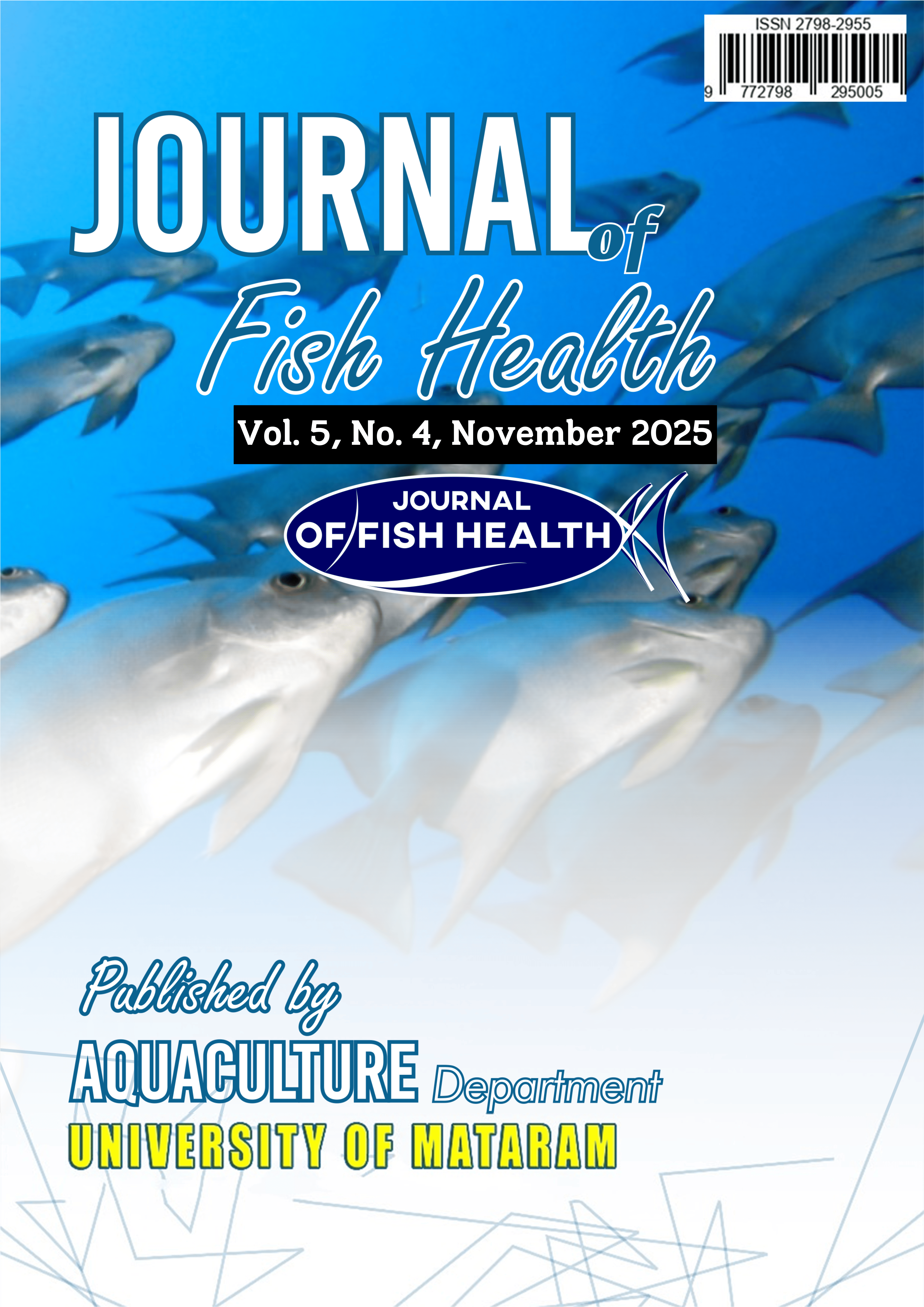Hematological Parameters and Growth Performance of Nile Tilapia (Oreochromis niloticus) Fed Fermented Papaya (Carica papaya L.) Leaf Extract
DOI:
https://doi.org/10.29303/jfh.v5i4.8335Keywords:
Fermented Papaya Leaves, Hematological Parameters, Growth Performance, Oreochromis niloticus, ProbioticAbstract
Nile tilapia (Oreochromis niloticus) is one of the most important aquaculture species worldwide, but intensive farming has increased susceptibility to bacterial infections, particularly Aeromonas hydrophila, which threatens productivity and survival. This study evaluated fermented papaya (Carica papaya L.) leaf extract (FPLE) as a natural immunostimulant and sustainable alternative to antibiotics in Nile tilapia culture. A 45-day feeding trial was conducted using a completely randomized design with five treatments (0, 16, 18, and 20 mL FPLE/kg feed) and three replicates. Hematological, immunological, growth, and bacterial resistance parameters were analyzed. Results showed that supplementation with 20 mL/kg FPLE significantly increased post-infection leukocyte counts (2.82×10⁴ vs. 2.40×10⁴ cells/mm³), phagocytic activity (46.26% vs. 39.51%), and erythrocyte levels (5.85×10⁶ vs. 5.25×10⁶ cells/mm³). Differential leukocyte analysis revealed lymphocyte dominance (90.33%) and elevated monocytes (13.33%), indicating enhanced adaptive and nonspecific immunity. In addition, total bacterial load decreased by 22.4%, and specific growth rate improved (4.34% vs. 4.22%/day), while water quality remained within optimal ranges. The synergistic effects of papaya-derived bioactive compounds and Lactobacillus casei probiotics from Yakult likely contributed to immune enhancement and nutrient absorption. FPLE supplementation at 20 mL/kg optimized immunostimulation without compromising survival (77–84%), demonstrating its dual role in disease prevention and growth promotion. These findings highlight FPLE as a safe, eco-friendly feed additive with strong potential for reducing antibiotic dependence and supporting sustainable tilapia aquaculture.
Downloads
Published
Issue
Section
License
1. The copyright of this journal belongs to the Editorial Board, based on the author's consent, while the moral rights of the publication belong to the author(s).
2. The formal legal aspect of journal accessibility refers to the same Creative Common Attribution + Noncommercial + ShareAlike (CC BY-NC-SA), implying that publication can be used for non-commercial purposes in its original form.
3. Every publication (printed/electronic) is open access for educational, research and library purposes. In addition to the objectives stated above, the editorial board is not responsible for copyright infringement















